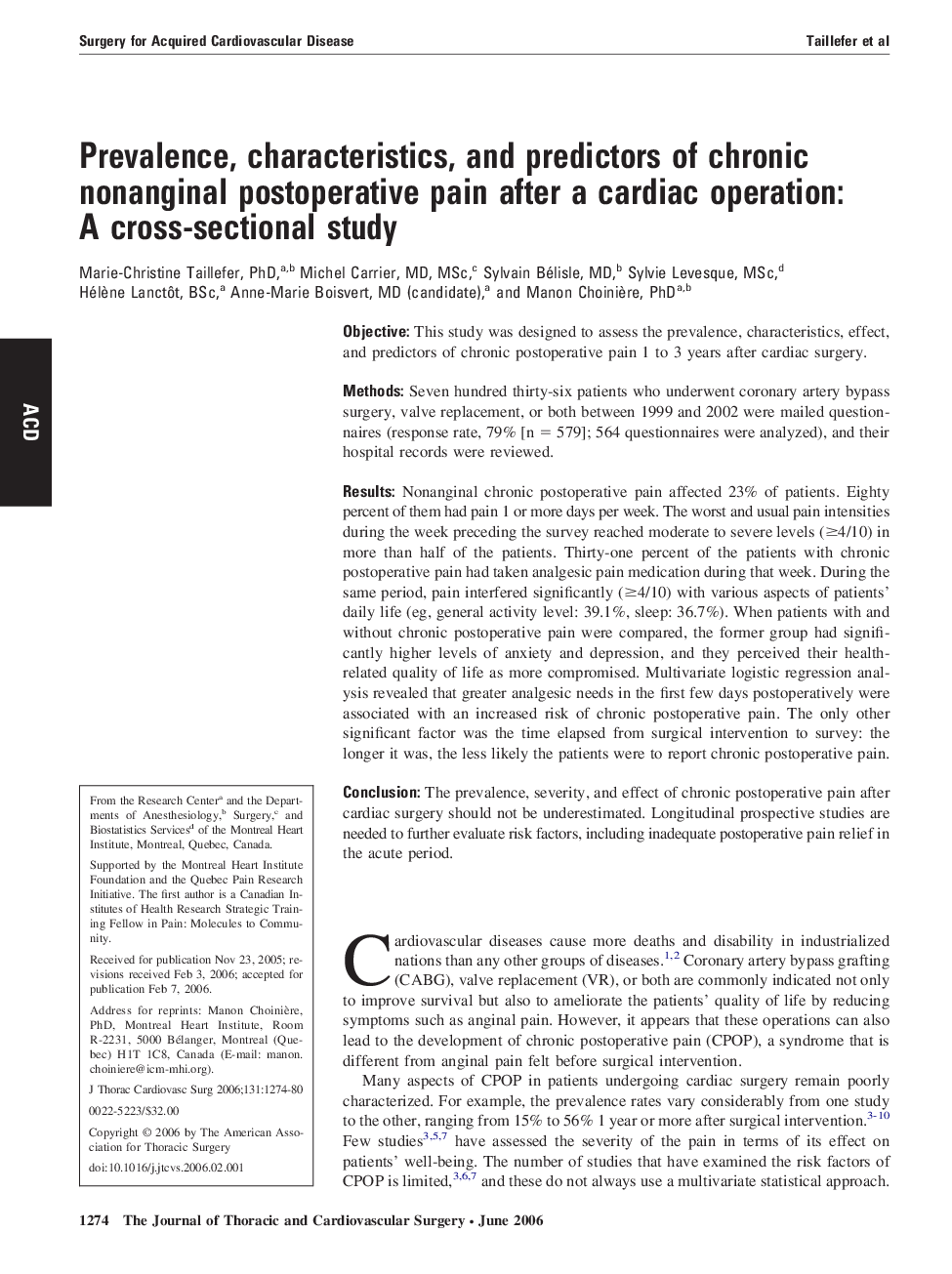| کد مقاله | کد نشریه | سال انتشار | مقاله انگلیسی | نسخه تمام متن |
|---|---|---|---|---|
| 2986848 | 1578709 | 2006 | 7 صفحه PDF | دانلود رایگان |

ObjectiveThis study was designed to assess the prevalence, characteristics, effect, and predictors of chronic postoperative pain 1 to 3 years after cardiac surgery.MethodsSeven hundred thirty-six patients who underwent coronary artery bypass surgery, valve replacement, or both between 1999 and 2002 were mailed questionnaires (response rate, 79% [n = 579]; 564 questionnaires were analyzed), and their hospital records were reviewed.ResultsNonanginal chronic postoperative pain affected 23% of patients. Eighty percent of them had pain 1 or more days per week. The worst and usual pain intensities during the week preceding the survey reached moderate to severe levels (≥4/10) in more than half of the patients. Thirty-one percent of the patients with chronic postoperative pain had taken analgesic pain medication during that week. During the same period, pain interfered significantly (≥4/10) with various aspects of patients’ daily life (eg, general activity level: 39.1%, sleep: 36.7%). When patients with and without chronic postoperative pain were compared, the former group had significantly higher levels of anxiety and depression, and they perceived their health-related quality of life as more compromised. Multivariate logistic regression analysis revealed that greater analgesic needs in the first few days postoperatively were associated with an increased risk of chronic postoperative pain. The only other significant factor was the time elapsed from surgical intervention to survey: the longer it was, the less likely the patients were to report chronic postoperative pain.ConclusionThe prevalence, severity, and effect of chronic postoperative pain after cardiac surgery should not be underestimated. Longitudinal prospective studies are needed to further evaluate risk factors, including inadequate postoperative pain relief in the acute period.
Journal: The Journal of Thoracic and Cardiovascular Surgery - Volume 131, Issue 6, June 2006, Pages 1274–1280